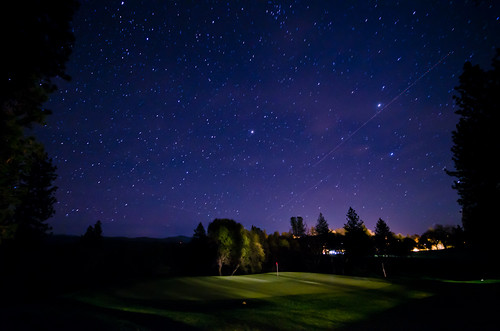Reclaiming the night sky

Posted August 29, 2013 at 1:25PM
When I was a kid, nothing captured my imagination so thoroughly and wondrously as did the night sky. I lived in a small city, and in a part of the city where there was very little illumination. The back side of our apartment complex contained only a few small lights over doorways.
This meant that we could go out most any clear evening and see stars by the hundreds, if not thousands. I learned their names, their constellations, their patterns of movement. I learned how old the scientists thought they were and how far away. I knew how many moons each planet had. It wasn’t long before I had checked out just about every book our city library had on astronomy. My elementary-school friend John was the same way, and together we began making and keeping scrapbooks of what we learned.
I live in a big city now – and love it – but I miss the stars. Nighttime produces wonderful ground-level vistas, but the night sky has become, literally, a blur. Our city – along with our metropolitan region, simply generates too much artificial light to allow all but a very few stars to break through and become visible. That’s the way it seems to be most everywhere in highly urban places. Does it have to be?
No, answers Thomas Schielke, co-author of the book Light Perspectives, in one of the best articles I have ever read about urban light:
“But what happens when lighting upsets our natural balance? When we lose the beauty of the dark sky, the stars? What happens when lighting turns into pollution?
“Irrespective of whether you live in an Asian megacity or a small village in the Alps, electrical lighting has replaced moonlight. Particles in the sky reflect urban light emissions and reduce the opportunity to enjoy the stars at night. Not only does this ‘sky glow’ affect people, particularly astronomers, but also other organisms, such as birds that are orientated by stars . . .
“[But] 100 years ago street lighting alongside roads had only an illuminance of 0.25 Lux, whereas today we have between 25 to 75 Lux on busy roads. [Professor Thomas] Posch encourages a reduction of lighting by half or even three-quarters for low traffic periods. The city of Augsburg in Germany, for example, has adopted this strategy successfully.”
Schielke’s article, which was published in Architecture Daily, discusses the issue at fascinating length, and includes five tips for citizens to “begin to reverse the loss of light.” I could go on but, honestly, he says it so much better and more knowledgably than I could. Check it out.
Meanwhile, watch this wonderful little video of Switzerland and the sky above by night:
Related posts:
- Transit stars in 3 kinetic time-lapse minutes from Zurich (May 10, 2013)
- How city lights change the way we experience places (February 15, 2013)
- The colors of a city evening (October 17, 2011)
- Striking images of the illuminated city (May 20, 2011)
- For Earth Day: the majesty of the northern lights (April 22, 2011)
Move your cursor over the images for credit information.
Please also visit NRDC’s sustainable communities video channels.
